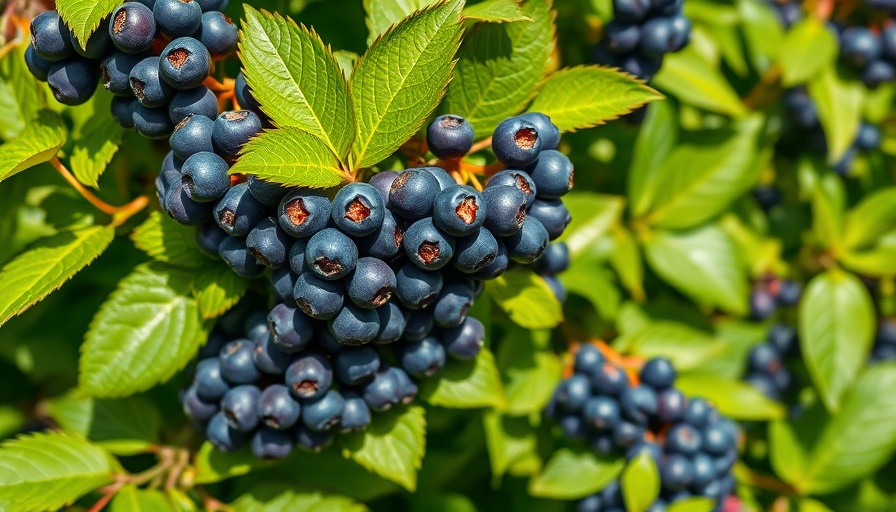
Discover the Allure of Honeyberries: A Nutritional Powerhouse
Haskap, commonly known as honeyberry (scientific name: Lonicera caerulea), is a remarkable fruit that offers an enticing combination of beautiful aesthetics and exceptional health benefits. This deciduous shrub is loved for its sweet-tart blue fruits that provide a delicious flavor often likened to a harmonious blend of blueberries, raspberries, and black currants. If you’re looking for a rewarding addition to your garden that thrives in colder climates, consider this cold-hardy shrub.
Planting Honeyberries: Essential Tips
When planting honeyberries, choosing the right variety is crucial. While most can tolerate a wide range of temperatures, some cultivars are more suited to specific climates. Russian varieties are excellent for colder areas, while Japanese haakap types thrive in warmer summer regions. No matter where you live, ensure that your planting site offers well-draining soil, preferably sandy or loamy, with a pH level ranging from slightly acidic to slightly alkaline.
A good rule of thumb is to select a planting spot that receives full sun to partial shade, providing your plants with at least six hours of direct sunlight each day. Prepare the soil by adding organic compost to improve its nutrient content, which will encourage healthy growth. After planting, the shrubs generally take about three to five years to mature and produce fruits, so patience is key!
Thriving Conditions: What You Need to Know
To ensure a thriving honeyberry crop, it’s important to consider pollination. Having at least two different cultivars nearby increases the chances of cross-pollination, enabling your plants to produce a bountiful harvest. These cold-hard shrubs can be bred to last up to 30 years with proper care, making them a long-term investment for your garden.
Watering is also a critical factor. Honeyberries prefer moderate watering; being careful not to overwater or allow the soil to dry out completely is essential. Mulching around the base can help retain moisture and keep the roots insulated.
Harvesting and Beyond: Enjoying Your Honeyberries
The excitement of growing honeyberries is amplified when you finally get to enjoy their fruits! Depending on the cultivar, harvesting can occur as early as late spring through early summer. When ripe, the berries turn a vibrant blue color and should be plucked gently to avoid squishing them. Fresh honeyberries can be savored raw or incorporated into a variety of dishes. They pair beautifully with yogurt or are deliciously blended into smoothies. Their unique flavor profile also lends itself well to preserves and desserts.
Culinary Creativity: Ways to Use Honeyberries
Experimenting with honeyberries can lead you to some delightful culinary discoveries. Consider making honeyberry compote, which can serve as a delightful topping for pancakes or waffles. You can also use them in salads, desserts, or even in savory dishes to add a unique twist. The nutritional benefits, including high levels of antioxidants and vitamins, make them an excellent ingredient for health-conscious recipes.
Sustainable Practices: Honeyberries in Your Backyard Garden
In today's eco-conscious world, incorporating honeyberries into your garden supports sustainable practices. These low-maintenance shrubs contribute to an organic garden, attracting various pollinators like bees and butterflies, which are essential for healthy ecosystems. Their adaptability and minimal care requirements create a perfect option for both beginners and seasoned gardeners looking to diversify their backyard landscape.
A Personal Connection: My Journey with Honeyberries
Having planted honeyberries in my own garden, I can personally vouch for the joy they add to the seasons. From the thrill of watching them bloom in spring to feasting on the sweet fruits in summer, the experience is both fulfilling and delicious. Growing these shrubs has not only enhanced my gardening skills but has also deepened my appreciation for nature's bounty. By sharing my honeyberry journey, I hope to inspire others to embark on their gardening adventures with these unique plants.
Conclusion: Start Your Honeyberry Journey Today!
Honeyberries offer an exceptional opportunity for any gardener eager to explore new fruit options or wanting to add a splash of color and flavor to their landscape. Their easy-care nature, coupled with beautiful fruits, makes them a memorable addition to any garden design. With the insights provided, take the next step in your gardening journey and consider planting honeyberries! Try one, or more, varieties in your garden and embrace the experience of growing your own delicious berries.
 Add Row
Add Row  Add
Add 




Write A Comment